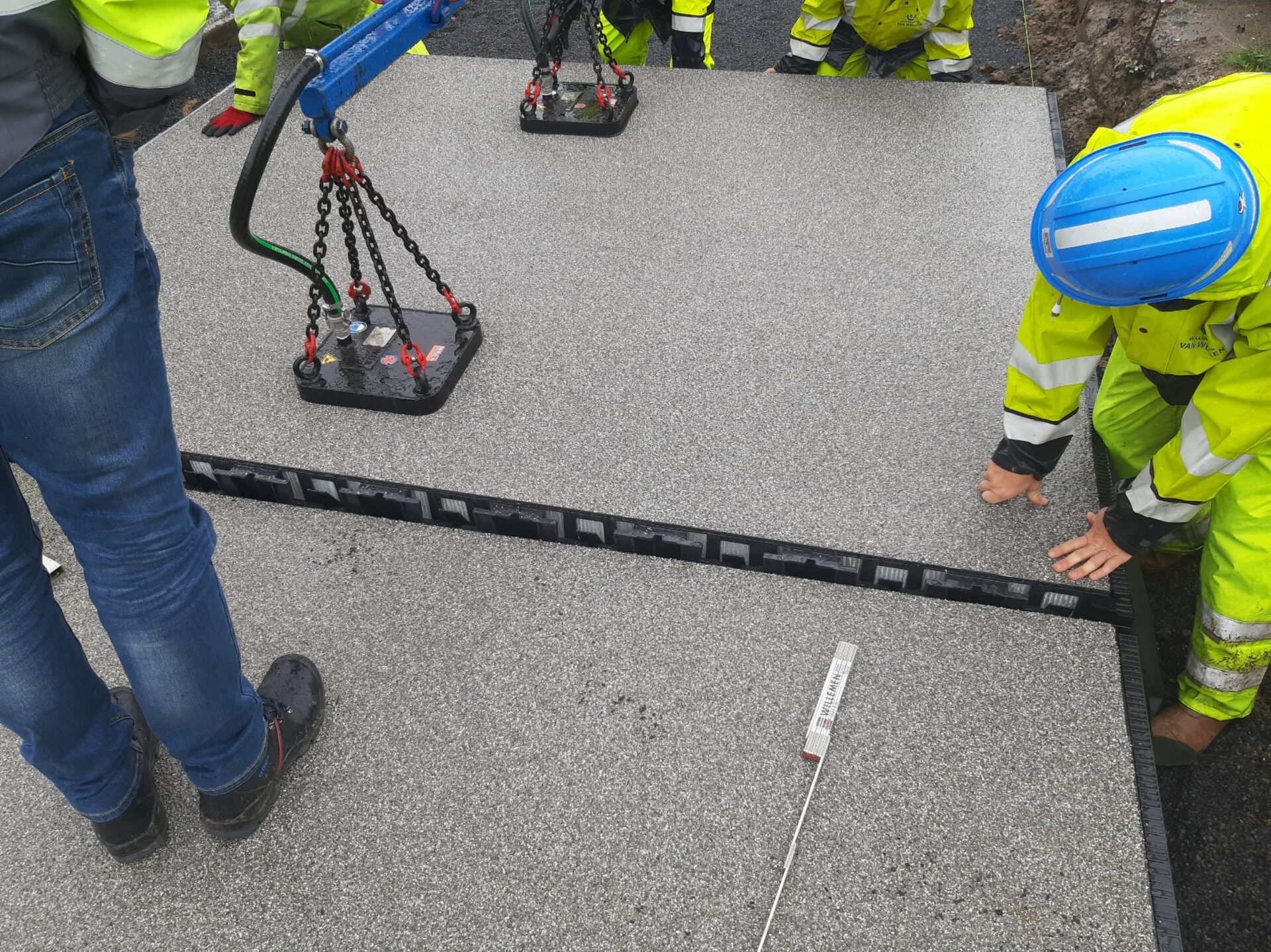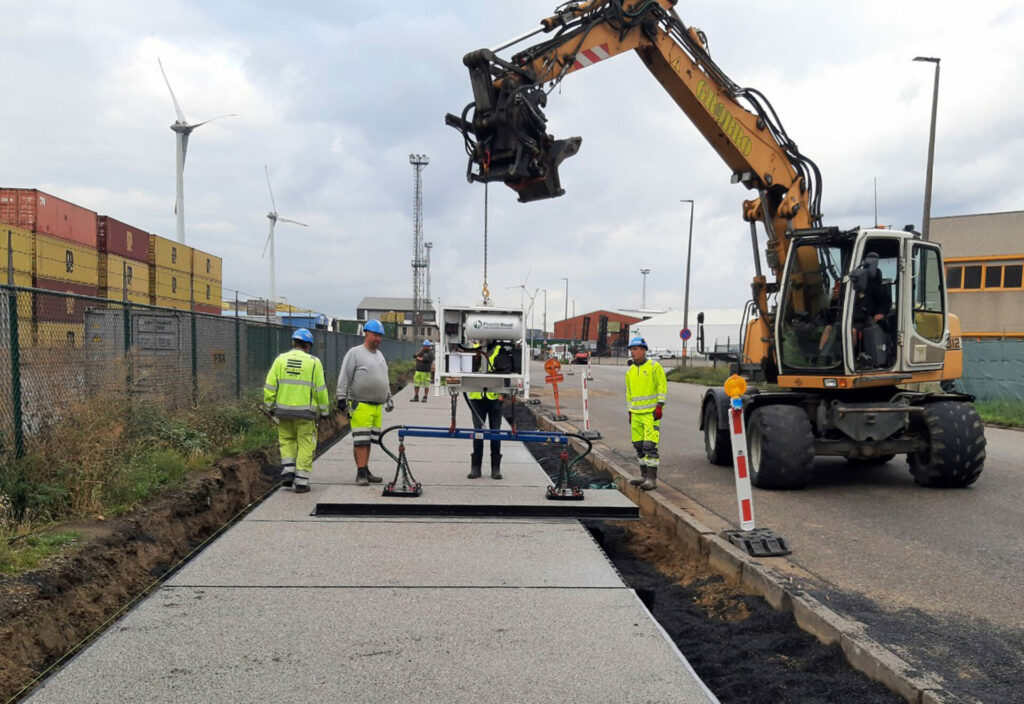A cycle path made partly of recycled plastic waste was opened in the Antwerp port area on Tuesday. The path is the first of its kind in Belgium.
At first glance, it looks like an ordinary asphalt cycle lane. But there is more than meets the eye under the top layer of the 800 metres of new cycle path. The path consists of two sections, each with an innovative application being tested.
1. Plastic cups and self-draining
Though only 75 metres long, the first section of the path is the most innovative and was constructed by Dutch company PlasticRoad. It consists largely of recycled plastic waste with a layer of fine stones on top.
About two million plastic coffee cups were used, making it 82% less carbon intensive than a traditional asphalt cycle lane. Moreover, it can store up to three hundred litres of water per square metre which will slowly be released into the soil.

Belgium's first cycle path made using recycled plastic in the port of Antwerp-Bruges. The new cycle path on Zomerweg on the Right Bank is 800 metres long in total and consists of two sections with several innovative applications of reused and recycled plastics. Credit: Port of Antwerp-Bruges / Belga
PlasticRoad has already constructed some similar bike paths and car parks in the Netherlands. "These are always short stretches to test out our technology," said director Jeroen Oudshoorn. "Our paths are more expensive than ordinary asphalt but they last longer: around 30 years. And because they are permeable you don't have to invest in drainage systems either."
According to Oudshoorn, interest in their cycle paths is growing. "There are no concrete plans to build plastic roads in Belgium yet but several municipalities have shown interest. Including the city of Antwerp."
2. Butter tubs and asphalt
The rest of the circular bike path was constructed by Scottish company MacRebur. It mixes asphalt with recycled plastic. The plastic pellets replace 6% of bitumen – the refinery oil used to make asphalt. This comes from recycled household waste, such as butter tubs or plastic bottles.
"Processing polymers in asphalt is not new," said Johan Braspenninckx, technical manager at Port of AntwerpBruges. "It has been done for more than 30 years to make asphalt stronger. However, it is a first that those polymers are made with recycled plastic."
MacRebur and the Port Authority will continue to experiment with the amount of plastic that can be added to asphalt. "Not only for cycle paths but also for roads," Braspenninckx said. "It is a solution that is not only more sustainable but can also strengthen the asphalt. The asphalt in our port must be able to withstand very heavy vehicles, such as trucks and moving cranes."
€40 million to modernise cycling lanes
The experiments with plastic cycle lanes are part of an ambitious plan to improve the port's cycling infrastructure. Over the next ten years, the Port Authority will spend €40 million to improve the more than 200 kilometres of cycle paths and build additional bicycle connections. The plans come as more people take their bikes to work in the port.
"Our port does not only consist of quays and docks but also infrastructure to get our employees to work safely," said Antwerp alderman for the port Annick De Ridder (N-VA).

